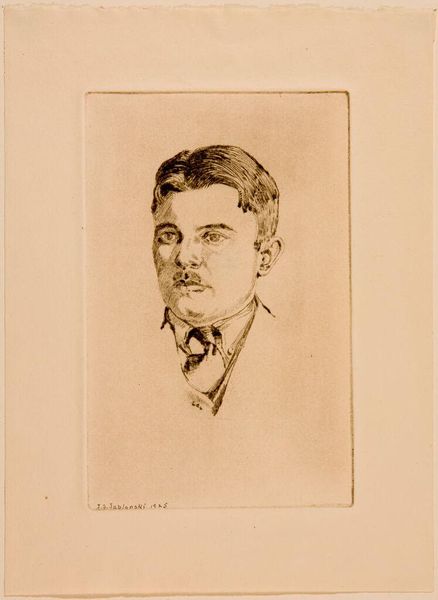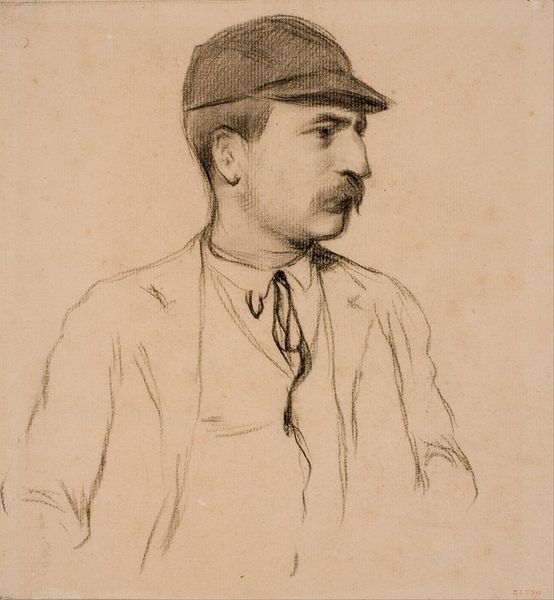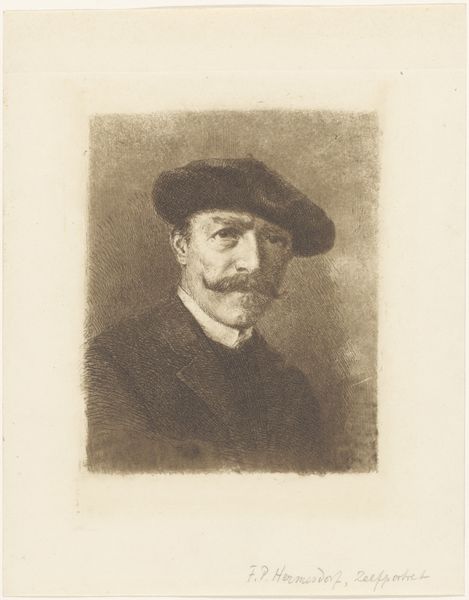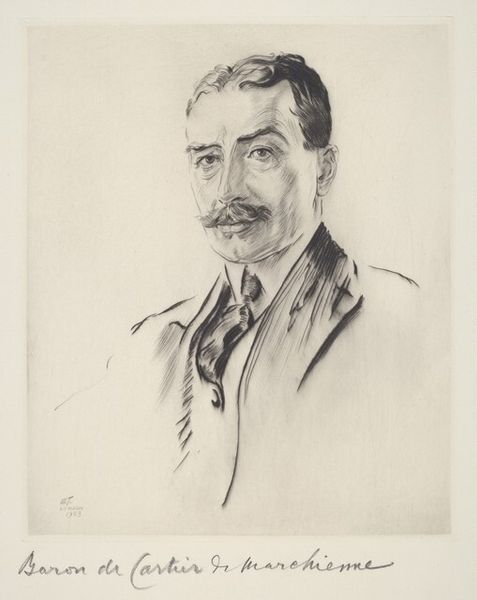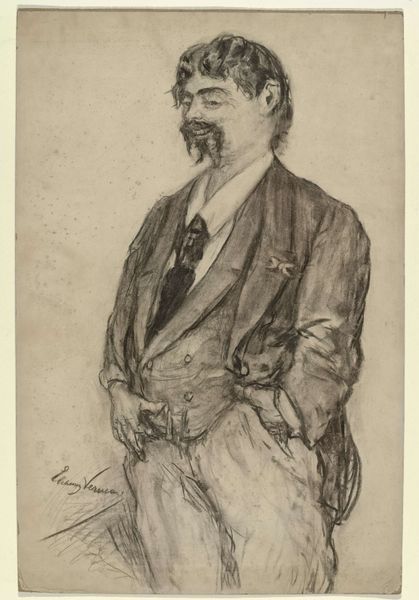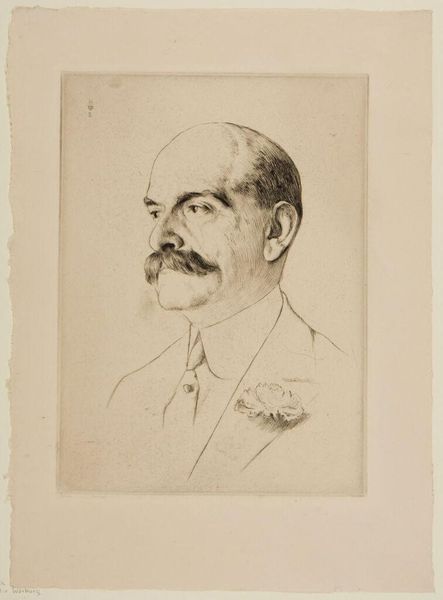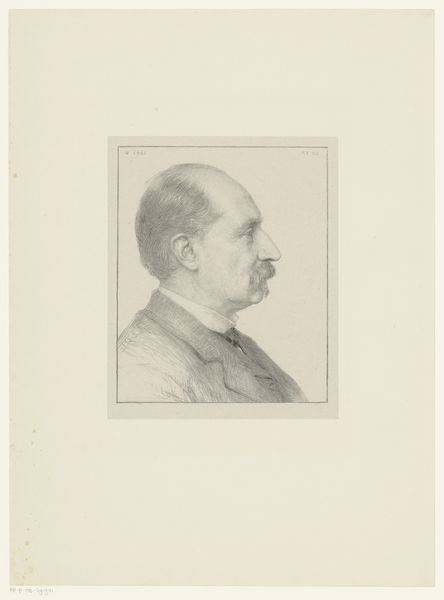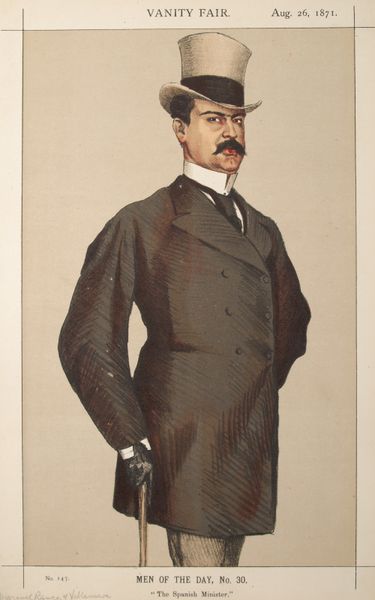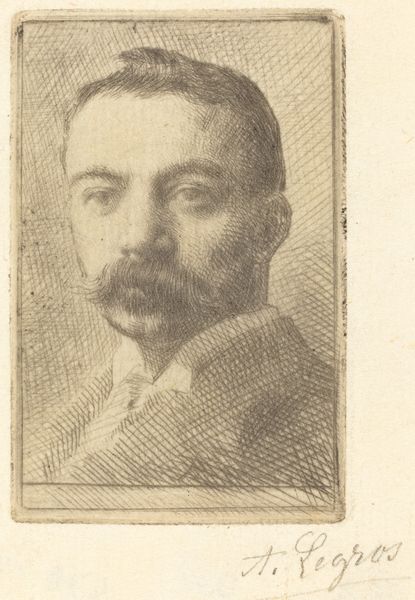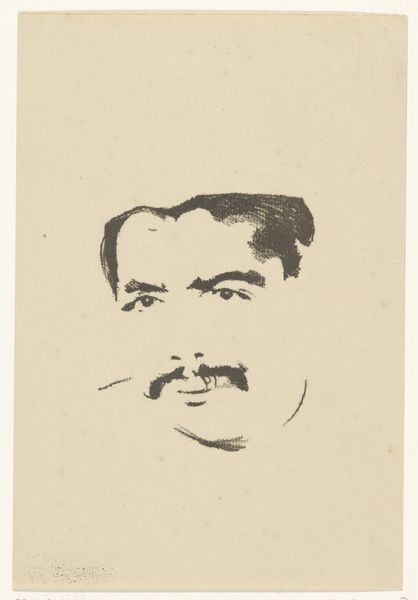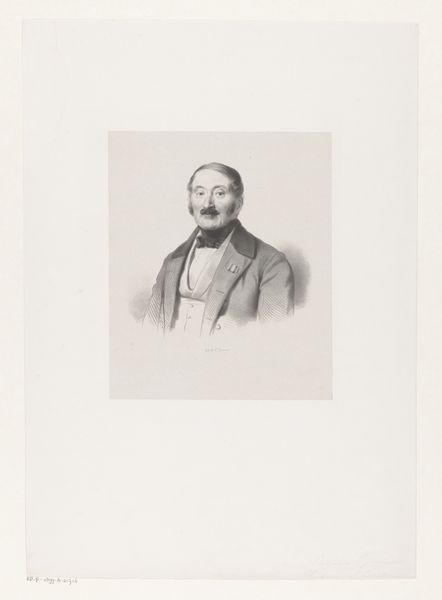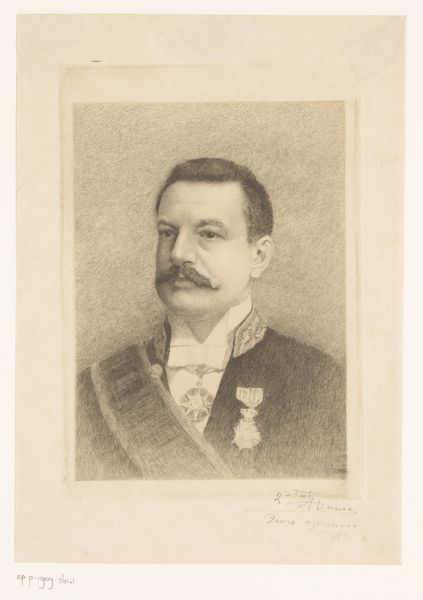
drawing, pencil
#
portrait
#
pencil drawn
#
drawing
#
pencil sketch
#
charcoal drawing
#
historical photography
#
pencil drawing
#
pencil
#
portrait drawing
#
realism
Dimensions: height 323 mm, width 256 mm
Copyright: Rijks Museum: Open Domain
Editor: This drawing, titled "Portret van Lodewijk Franciscus Hendrik Apol" created sometime between 1870 and 1899 by Barend Leonardus Hendriks, is strikingly realistic. There's an undeniable formality to the subject, emphasized by the bowler hat and suit. What story do you think this image tells about the subject and the artist? Curator: Well, beyond the surface realism, consider the social dynamics embedded in a portrait like this from the late 19th century. Who commissions such a piece, and why? Hendriks, by depicting Apol in such a conventional style, participates in the established power structures of the art world. Editor: So, it's less about individual expression and more about reinforcing societal norms? Curator: Precisely. Think about the institutions that supported artists like Hendriks – academies, galleries, wealthy patrons. A portrait like this wasn't just a likeness; it was a social performance, solidifying Apol's status. Editor: Interesting. I hadn't considered how the art world itself could be shaping the artwork's meaning. Does the choice of medium, pencil, factor into this as well? Was it perhaps more accessible, and therefore influenced by the democratization of art at the time? Curator: Good question. Pencil drawings often served as preliminary sketches or studies, less formal than a finished oil painting. In that sense, you might see it reflecting a growing accessibility to art, even while adhering to portraiture's traditional function of memorializing status. Editor: It seems there is a duality within the artwork, reinforcing traditional portraiture norms while hinting at democratization through a different choice of medium. Curator: Indeed, it’s about understanding the nuances within seemingly straightforward images and seeing art as intertwined with socio-political and institutional history. It changes our viewing perspective. Editor: It really does. I'm looking at this drawing in a whole new way now, understanding the artist as someone navigating and reinforcing social norms.
Comments
No comments
Be the first to comment and join the conversation on the ultimate creative platform.
